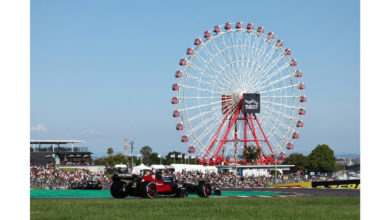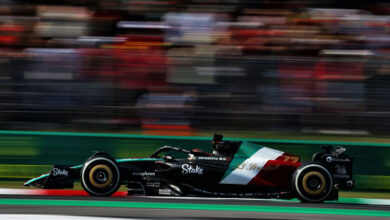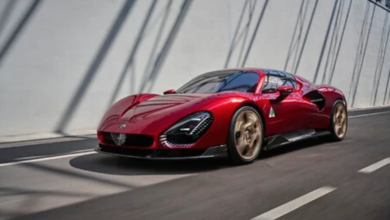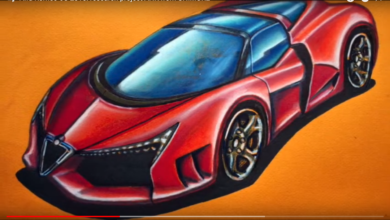Abarth and Alfa Romeo, ambassadors of the elegance and sportiness of historic motoring at the prestigious “FuoriConcorso” and “Villa d’Este” events
In the splendid setting of Lake Como, two of the most prestigious historical motoring events in Italy and worldwide have just ended: “FuoriConcorso” and the “Concorso d’Eleganza di Villa d’Este” The stars at both events were the cars presented by Stellantis Heritage: the streamlined Abarth 1000 Monoposto Record Pininfarina (1960), a manifesto for aerodynamics selected for “FuoriConcorso”, and the two Alfa Romeo 33s, the 33/2-liter “Daytona” (1968) and the 33 TT 12 (1975), on show at Villa Erba to celebrate the centenary of the Le Mans circuit By putting cars on display and taking part in industry events, Stellantis Heritage reaffirms its mission, aimed at preserving and promoting the historical heritage of the Alfa Romeo, Fiat, Lancia and Abarth brands: an objective also highlighted by the opening to the public of the Turin Heritage Hub, which welcomes visitors on an exciting guided tour of over 300 vintage cars (info and tickets here)
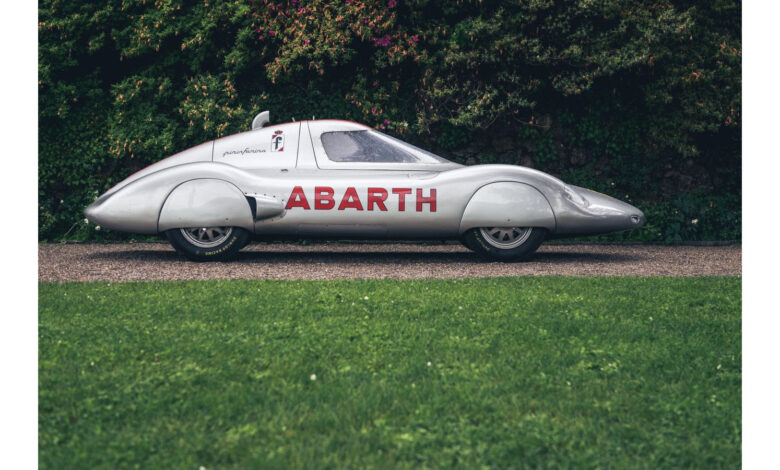
Great public acclaim for two of the most prestigious historical motoring events in Italy and worldwide, “FuoriConcorso” and the “Concorso d’Eleganza di Villa d’Este”, which have enlivened the weekend in the towns on the banks of Lake Como.
“FuoriConcorso”, launched in 2019 and already established as one of the most engaging automotive events in the world, aims to disseminate motoring culture while offering a taste of the renowned Italian lifestyle. Hosted in the elegant gardens of Villa del Grumello and Villa Sucota and this year themed “Aero”, one of the participants was the Abarth 1000 Monoposto Record Pininfarina (1960), one of the most precious gems in the Stellantis historical collection. A true manifesto of aerodynamics, fully in line with the theme of the event, this powerful and tapered prototype originated from the continuous and prolific collaboration between Fiat, Abarth and coachbuilder Pinin Farina.
Fiat launched the New 500 in 1957 and, with the aim of highlighting the qualities of its small twin-cylinder powertrain, entrusted its development to the Officine Abarth, specialists in the production of cars with high sports performance. Abarth built a lightweight, streamlined single-seater around the engine, using a tubular chassis and a tapered body made in collaboration with coachbuilder Pinin Farina. The successes and records conquered on the track came one after another, as did the engine and aerodynamic evolutions until 1960, the year of an extreme development: from the point of view of aerodynamics, the “tail” was changed in shape and length, the new record-breaking body was divested of the long rear fins used in previous years and was much shorter due to the significant reduction in the overhangs over the wheels.
In addition, the new single-seater was equipped with the new one-liter displacement twin-shaft: the 1000 delivered a total of 108 horsepower, over 100 hp per liter without turbocharging, a very high value for a competition engine of the time that was required to endure arduous long-distance routes.
Needless to say, on September 28, 1960 at the Monza circuit, the Abarth 1000 Monoposto Record Pininfarina shattered a succession of records, from the average speed of over 203 km/h to another over 72 hours, achieved by covering 12,824.545 km at an average speed of 186.68 km/h.
The model on display at “FuoriConcorso” forms part of the Stellantis Heritage permanent collection of vintage cars, and features in the “Records and Races” section of the Heritage Hub at Via Plava, 86 in Turin (visits by reservation via this link).
The “Concorso d’Eleganza Villa d’Este” is one of the most prestigious events in the industry (the first dates back to 1929). In addition to its traditional and aristocratic headquarters in Cernobbio, it also included the enchanting Villa Erba, where the centenary of the 24 Hours of Le Mans was celebrated. Hence the link with Alfa Romeo, which decided to exhibit two gems from its vintage collection, the 33/2-liter “Daytona” (1968) and the 33 TT 12 (1975), both of which featured on the French tarmac.
The Alfa Romeo 33/2-liter “Daytona” originates from the noble sporting spirit of the brand which, after retiring from competition in 1951 after winning its second of two F1 World Championships with the Alfetta 158-159, returned to the international scene with Autodelta (1963), the Milan company’s official racing department, celebrating its 60th anniversary this year.
To follow its initial successes with touring cars, Autodelta decided to make the leap in quality in the “prototypes” category, starting with the “Tipo 33”.
The Sport prototypes were designed exclusively for racing, equipped with extremely sophisticated engines and chassis, and were produced in the limited numbers required for type approval. They were equipped with a refined and powerful two-liter 8-cylinder V-shaped central engine, delivering 270 hp and reaching almost 300km/h.
The first version of the 33/2 Sport Prototype (where 33 was the project number and 2 the displacement expressed in liters) won its debut race in March 1967, uphill at Fléron near Liège, Belgium: Alfa Romeo then launched itself in the World Sportscar Championship, taking prestigious victories in grueling endurance races, first of all at the 24 Hours of Daytona, where it conquered the top three places with the crews of Vaccarella-Schütz, Andretti-Bianchi, and Casoni-Biscardi-Zeccoli. This major victory led to the name of the renowned U.S. circuit becoming part of the moniker of the Alfa Romeo 33/2. The 33 also achieved excellent results at the 24 Hours of Le Mans – with another hat-trick in the class. In other competitions, it also made its mark in the overall standings, including ahead of much more powerful cars: this also happened at Mugello, where Vaccarella-Bianchi-Galli came in atop the podium.
The Progetto 33’s development was unceasing and finally in 1975 Alfa Romeo managed to make its dream come true by winning the World Championship for Brands. The star of this overwhelming superiority was the Alfa Romeo 33 TT (Tubular Chassis) 12, a car equipped with a three-liter 12-cylinder 180° V engine capable of delivering 500 hp and reaching 330 km/h. With great drivers, most of whom also featured in Formula 1, such as Arturo Merzario, Vittorio Brambilla, Jochen Mass, Jaques Laffite, Henri Pescarolo, Derek Bell, Jacky Ickx and Nino Vaccarella, the 33 TT 12 took victory in seven of eight races that counted towards the World Championship. The legendary 12-cylinder engine fitted to the car laid the foundations for Alfa Romeo’s return to F1 in 1976, as engine supplier for the Brabham team.


